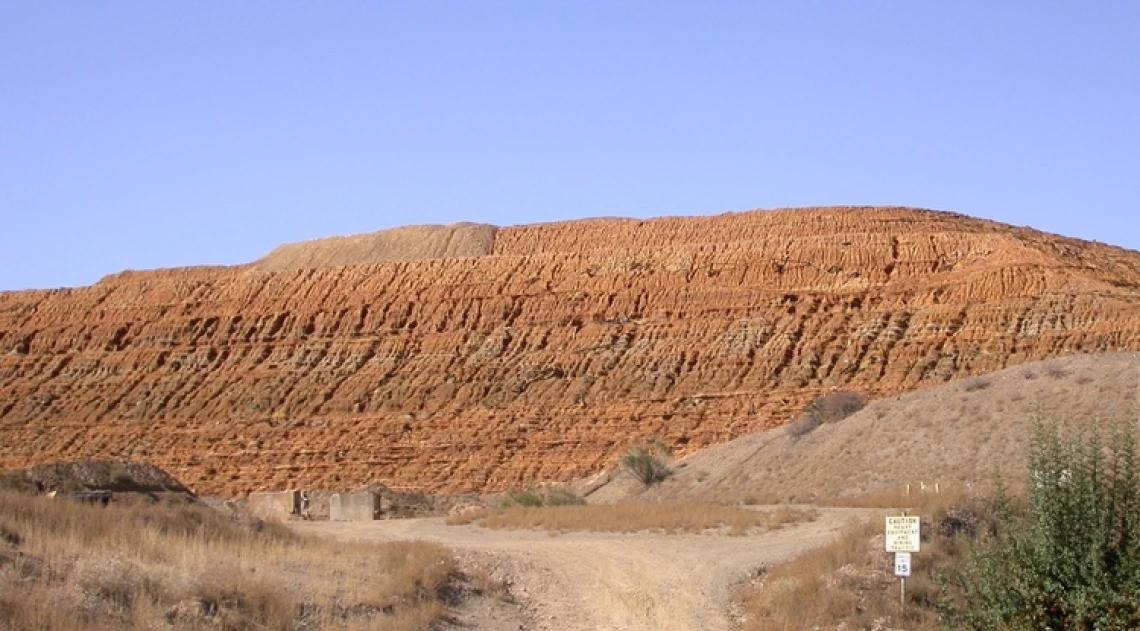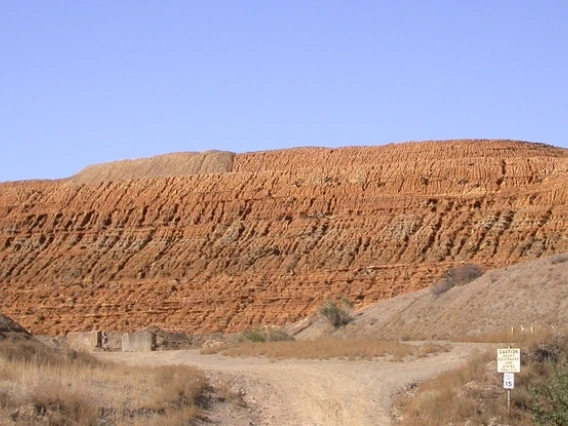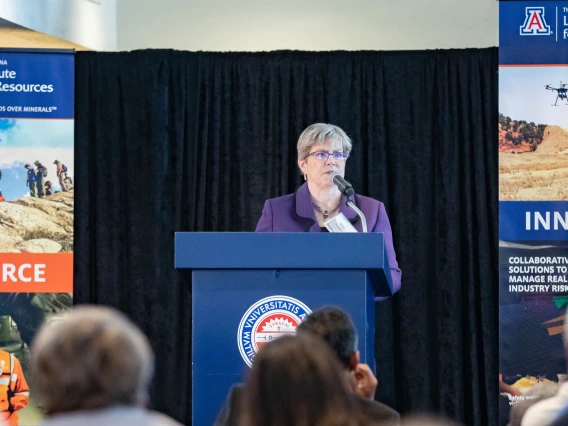Startup Licenses Sustainability Technology for Mining Industry
Auxilium Technologies has brought together multiple inventions from UA mining and geological engineers that improve the output of mines while reducing their environmental impact.

The front of the mine tailings pile at the Iron King Mine and Humboldt Smelter Superfund Site in Yavapai County. (Photo: UA Superfund Research Center)
While mining generates much-needed resources to power the world economy, the industry is seeking ways to reduce its environmental footprint. To address historic challenges in mining, such as soil and water pollution and water usage, inventors from the University of Arizona College of Engineering have joined forces with an experienced mining industry entrepreneur to launch the startup Auxilium Technology Group. The Tucson-based company has licensed UA inventions that offer sustainable and holistic solutions that address growing concerns about mining's impact on the environment and climate change.
Under the leadership of Auxilium CEO Abraham Jalbout, the company will develop the inventions, which make ore leaching processes more efficient and less toxic, contribute to water conservation and reduce energy consumption.
“Where others see waste, we see opportunity,” Jalbout said. “We are bringing together these technologies from the different people on the team, and we’re putting them together in a circuit to create a holistic approach to tailings management, which makes a very unique value proposition in the tailings world.”
Tech Launch Arizona, the UA office that commercializes inventions stemming from research, has worked closely with the team in launching the new venture and has licensed three patent-pending technologies to Auxilium; additional licenses for more inventions are in discussion. This type of entrepreneurial collaboration offers a pathway for university researchers looking to increase the impact of their research and advance the industry even as they remain committed to educating the next generation of mining professionals.
TLA Senior Licensing Manager Bob Sleeper and Mentor-in-Residence Steven Wood worked with the inventors and Jalbout to launch the company and license the technologies.
“As a backbone industry of the U.S. economy, mining companies are hungry for these kinds of solutions,” said Sleeper, who works with university inventors to refine and protect intellectual property and to match inventions with licensee companies. “There's lot of public pressure to clean up existing mining systems, not build new ones, and that’s what makes these technologies exciting. The idea that we can work smarter and make existing mines cleaner to operate is a worldwide concern.”
Jaeheon Lee, an associate professor of mining and geological engineering, contributed one of the licensed technologies – a leaching process that uses the organosulfur compound thiourea rather than the more toxic element cyanide to extract gold from ore. The process he developed can reach up to 98% efficiency of extraction, resulting in higher profitability and lower toxicity.
“Sometimes you have gold in your copper or copper in your gold, and it must be sent to a processing plant. Rather than get 100% of the valuable metals, they might receive 35 to 85%,” he explained.
Associate professor Moe Momayez, interim head of the Department of Mining and Geological Engineering and David and Edith Lowell Chair in Mining and Geological Engineering, contributed two other licensed technologies.
Storing mine tailings – a common industry practice – requires pumping waterborne refuse material into human-made ponds where it is kept and separated. Momayez invented a system of floating, interlocking panels that cover tailings ponds to reduce evaporation and increase the amount of water available for reuse. The system also can be outfitted with solar panels to generate electricity.
He also invented a spray-on thermal insulating geofoam made with mine tailings. When sprayed on the walls in hot underground mines, the geofoam provides a layer of insulation that prevents heat from radiating from the rock into the working areas, significantly reducing the cost of cooling the air. The team also foresees an opportunity to leverage this technology to benefit the construction industry.
The Auxilium Technology Group leadership team also includes Dominic Gervasio, associate professor of chemical and environmental engineering at the UA, who brings expertise in applying chemistry to the processing of ore.
“Our ultimate goal is to reach zero waste,” Momayez said. “Mining is a very water and energy-intensive industry. We’re excited to provide solutions that extract valuables from mining effluents and reduce mine waste – the most visible footprint of the mining industry.”
Auxilium's growing technology portfolio reflects its goal of creating sustainable solutions for issues affecting today’s mining industry. Building on a long-standing relationship with the College of Engineering, Jalbout continues to work closely with UA inventors and Tech Launch Arizona to identify new technologies that will be beneficial for the company and contribute to greater sustainability for the industry.



